How to make a Gorillaz‑style synth string patch
We show you how to use a retro sound in an über-contemporary setting as synth strings get the Gorillaz treatment
We have always loved the connection between the development of technology and the way it is harnessed by artists. The early electronic music pioneers had to develop all sorts of clever techniques to create the music they wanted to produce, often improvising with cheaper technology.
In a similar vein, products were sometimes produced to be more cost-effective. One such example emanates from the synthesiser replication of string sounds. In the early days, good polysynths were very expensive. Consequently, companies invented a type of synthesiser generically known as the string machine, offering more than a passing resemblance to the sounds of the same name.
String machines were cheaper by quite some margin, while remaining polyphonic, albeit in a slightly different guise, known as paraphonic (a cheaper and less flexible version of polyphonic). These string machine sounds adopted a whole class of sound all of their own, and while their place in history is decidedly vintage, there are no shortages of contemporary settings and artists wishing to use these sounds, either to pad out their productions or provide lead-line colour.
This is where we draw inspiration for this month’s Synth Masterclass. This sound is perfect for melodies or counter-melodies, pads and more. In this tutorial, we're going to use u-he's ZebraCM, a free synth plugin that comes bundled with every issue of Computer Music Magazine. If you don't have ZebraCM to hand, you can follow along with one of your own soft synths. Let's create a string patch!

Let’s begin by initialising a patch on the ZebraCM. Open up your DAW and load up the plugin. Once the plugin window is open, move to the central display at the top of the window, click to reveal the drop-down menu, and select ‘init’ from the bottom. This will initialise the patch.
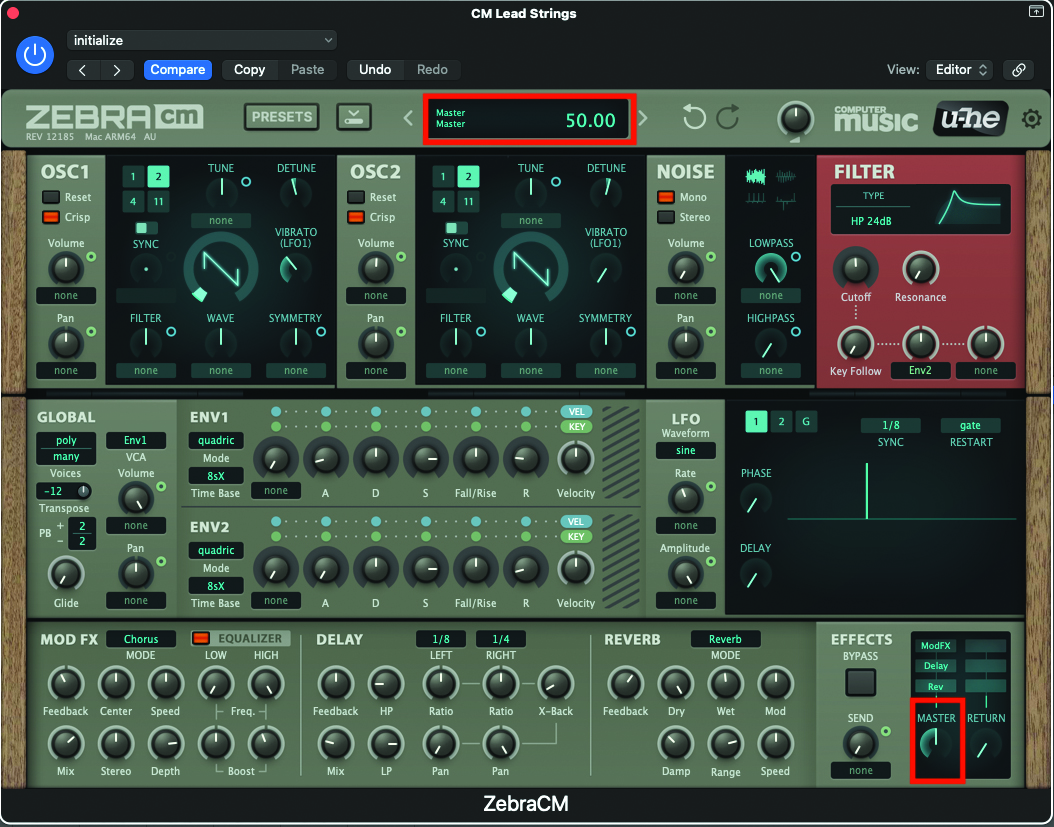
This patch is going to be a relatively loud one, so now would be a great time to reduce your master volume to a level of 50. Just as a reminder, every time you tweak a pot or setting on the ZebraCM plugin, you will see an accurate value/numeric in the upper display.
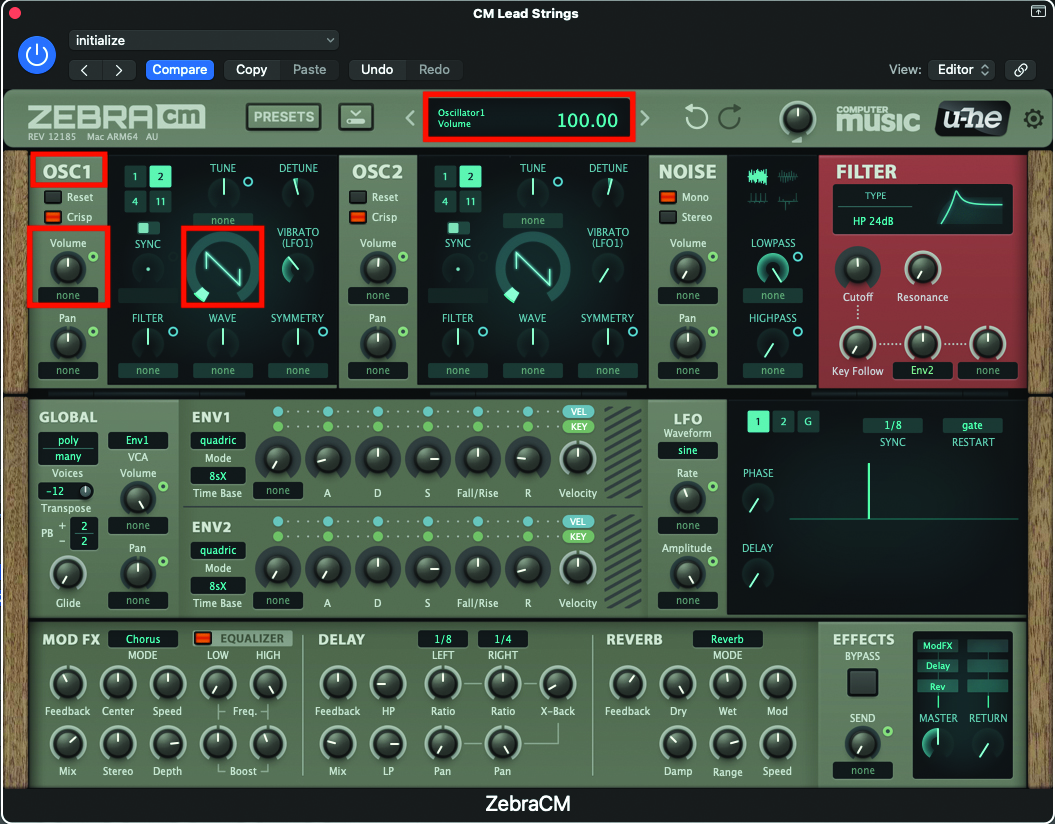
Our patch creation begins with a sawtooth, which should be the default Wave setting on OSC1. Ensure that the volume is set to 100. String machine sounds often need a bright waveform, so the classic Saw is the ideal choice.
Want all the hottest music and gear news, reviews, deals, features and more, direct to your inbox? Sign up here.
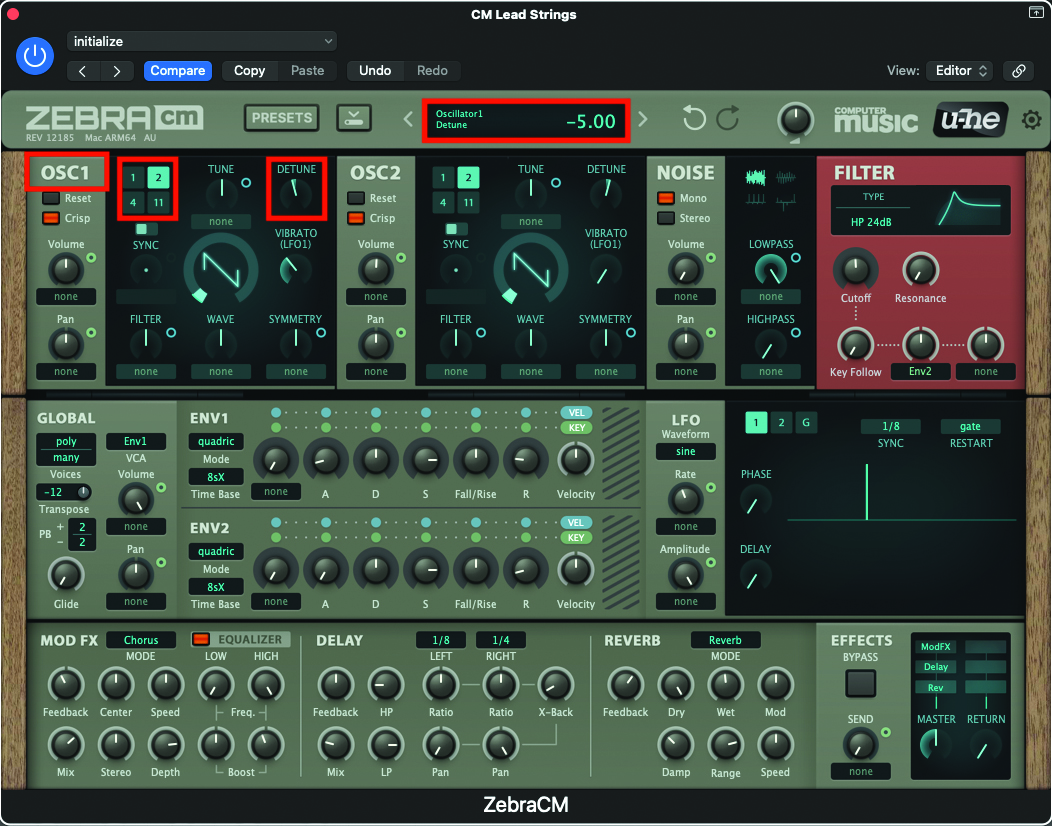
Staying within the OSC1 section, set the wave aliasing button to a value of 2. This should become highlighted in turquoise. We can then detune the aliased waves, by adjusting the detune pot to a value of -5. The detuning will thicken the texture immediately.
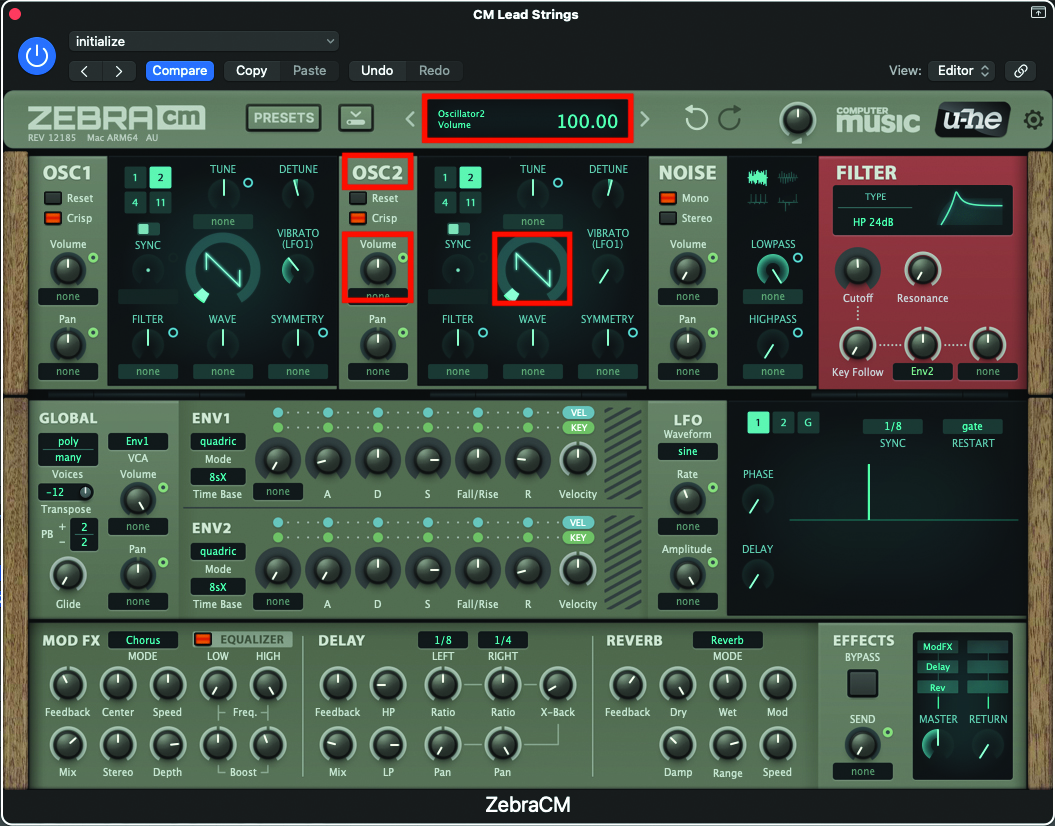
Now we can turn our attentions to OSC2, where we will be using a very similar set of values. Beginning with the waveform, leave this set to the default Sawtooth. Next, turn up the OSC2 volume, to a value of 100, which matches OSC1.

By a similar token, we will want to activate a second aliased waveform, by clicking on the number 2 in turquoise. Moving to the Detune pot, adjust this to a value of +5, which will nicely counteract the detuning on OSC1. By tuning in the opposite direction, it creates an even thicker texture.
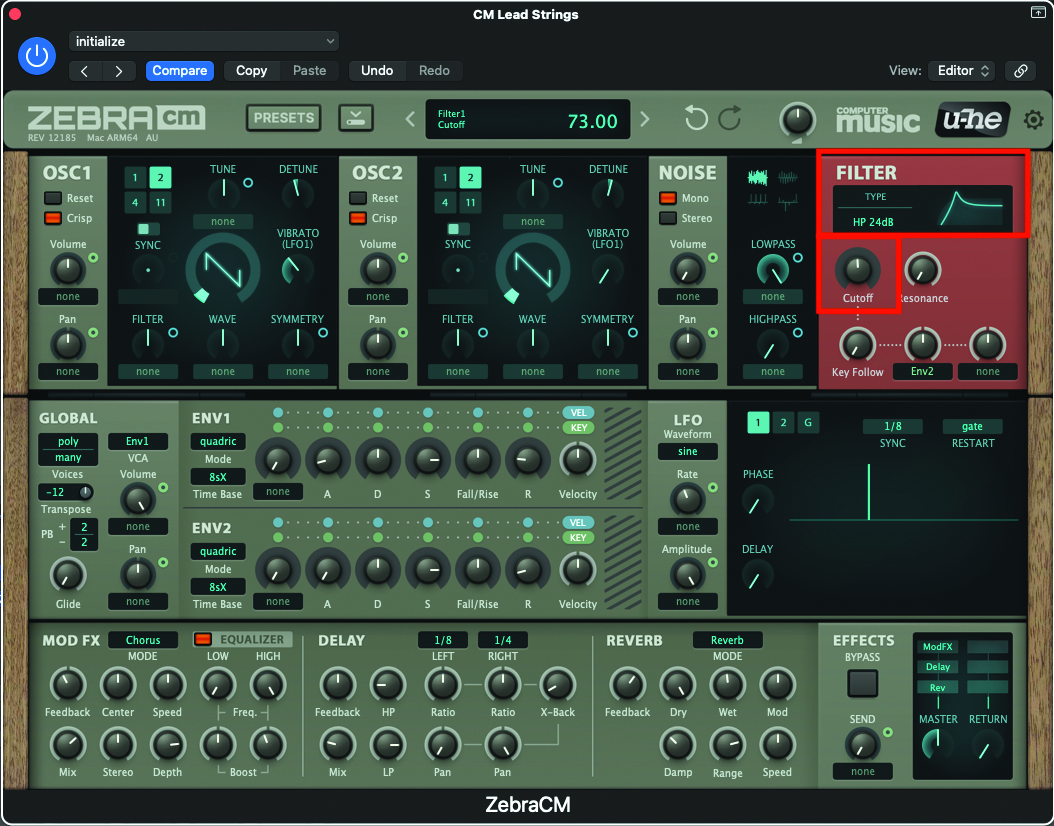
One of the particular traits of synth-string sounds, is their overt brightness. We can replicate this, via the use of a high-pass filter. Select the HP24dB filter, from the filter section drop-down menu, before adjusting the Cutoff pot to a value of 73. You won’t hear a sound until you make this pot adjustment.
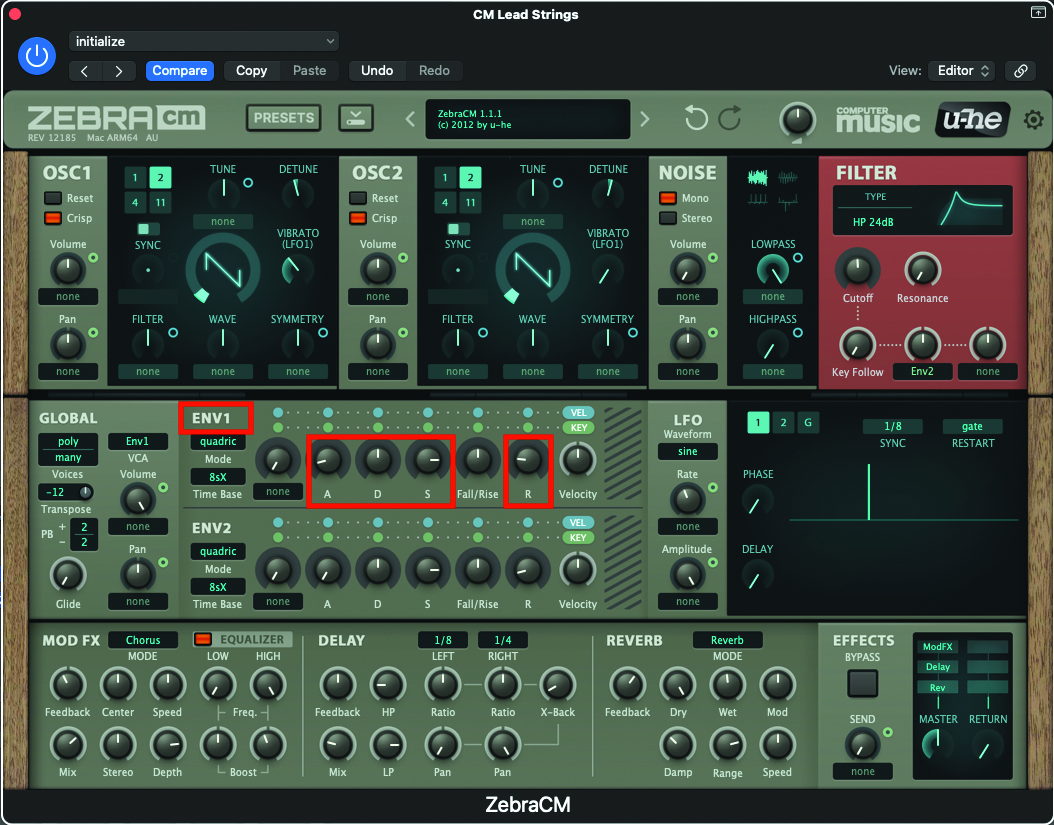
We only require the use of ENV1 for this patch, as we only need to control the amplitude, or volume of our sound. Set the Attack pot to a value of 15, Decay to a value of 50, the Sustain to 80, and finally the Release to 22. This will provide a quick fade-in, at the beginning of each note, and a similarly quick fade-out, on the back end of each note.

We’re now going to briefly turn our attention back to OSC1. It would be useful to apply some pitch modulation, just to the first oscillator. We can do this by adjusting the Vibrato pot, to a value of 37. The rate of the vibrato is adjusted within the LFO section. Feel free to vary the speed to suit your sound, but something mid-to-slow will be most effective.
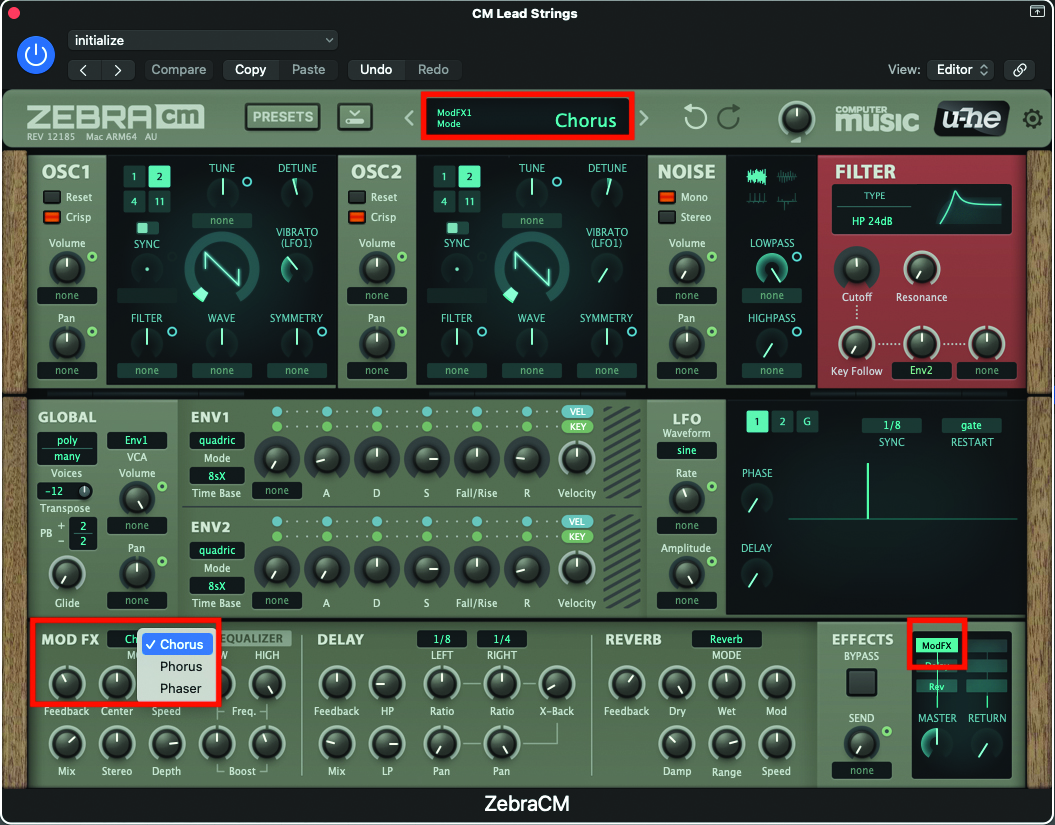
To thicken our texture even further, we can utilise the effects, onboard ZebraCM. Activate the ModFX button, on the bottom right-hand side of the plugin, by double-clicking on it, so that it highlights in turquoise. Now move to the ModFX section on the left, and select Chorus from the drop-down Mode menu.

The Chorus acts as Sonic Cornflour for our sound, and you can adjust the settings to suit your production. Try setting the Mix pot to a value of 66, and the Depth pot to a value of 78. We quite like this more generous chorussed sound, but you can tone it down by backing off the Mix pot.
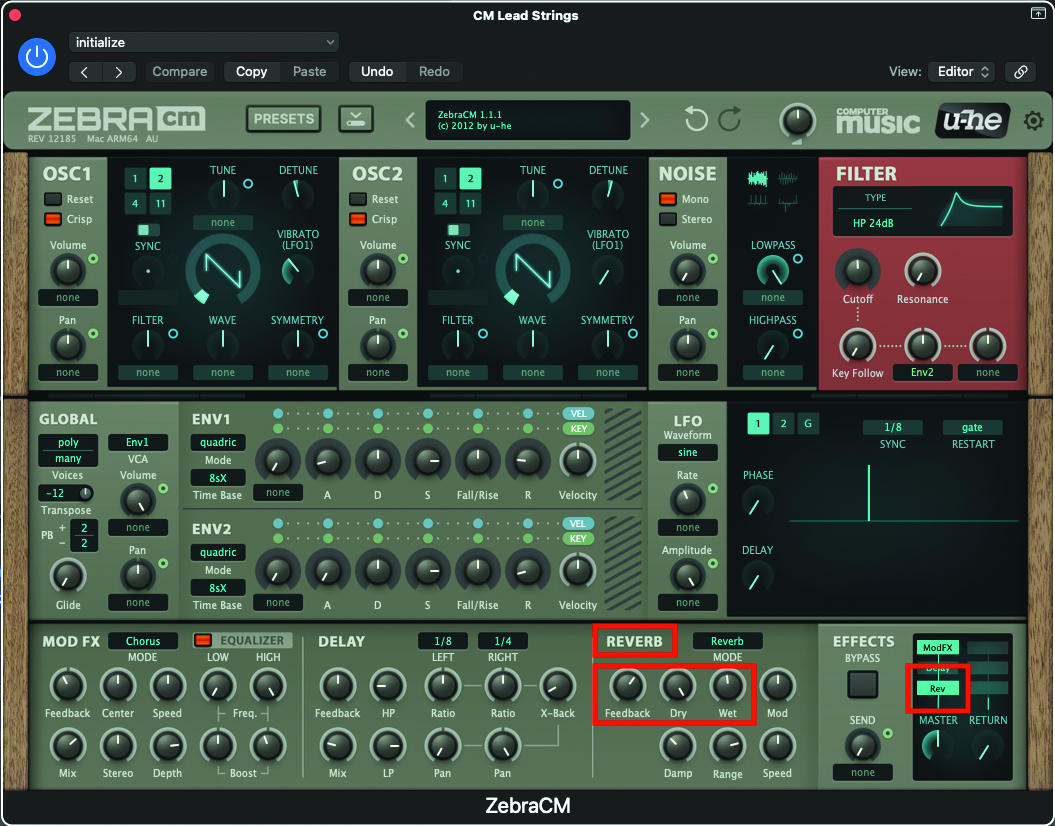
Finally, try applying some reverb, either from within the ZebraCM plugin, or as a secondary plugin from within your DAW. As the timbre is relatively bright, a reverb will help the patch shimmer, once you release notes while playing.
Pro tip
Anyone who has ever delved down the rabbit hole of vintage synthesisers may well have noticed that many of the early machines didn’t sound as huge as you might expect. In an attempt to bring the price down to something affordable, manufacturers took to removing components from the signal path. A case in point for synths such as the Roland Juno-6 or string machines, was that their primary oscillators might not be so much primary, as the only oscillators available!
This meant that modulation effects, such as chorus or phaser, would often be added as standard, in order to thicken up the texture. This quickly became a standard practice for any string-like sound, with several favourites remaining sought after vintage classics.

The EHX Small Stone phaser is a case in point; still available today, the current models adopt the same name and fine sounds, but they are a far cry from the original deteriorating signal flow of an original from 1974. Thankfully, many of these classic effects have been remodelled in software, so you don’t have to go full vintage to get something very similar in tone and sound.
Recommended listening
1. Gorillaz - Silent Running
Even in the most contemporary setting, the classic string synth sound provides the perfect tone for counter-melody and hooks.
2. Radiohead - No Surprises
This modern-day classic, from the album OK Computer, utilises a Solina string machine, to provide a beautiful texture.